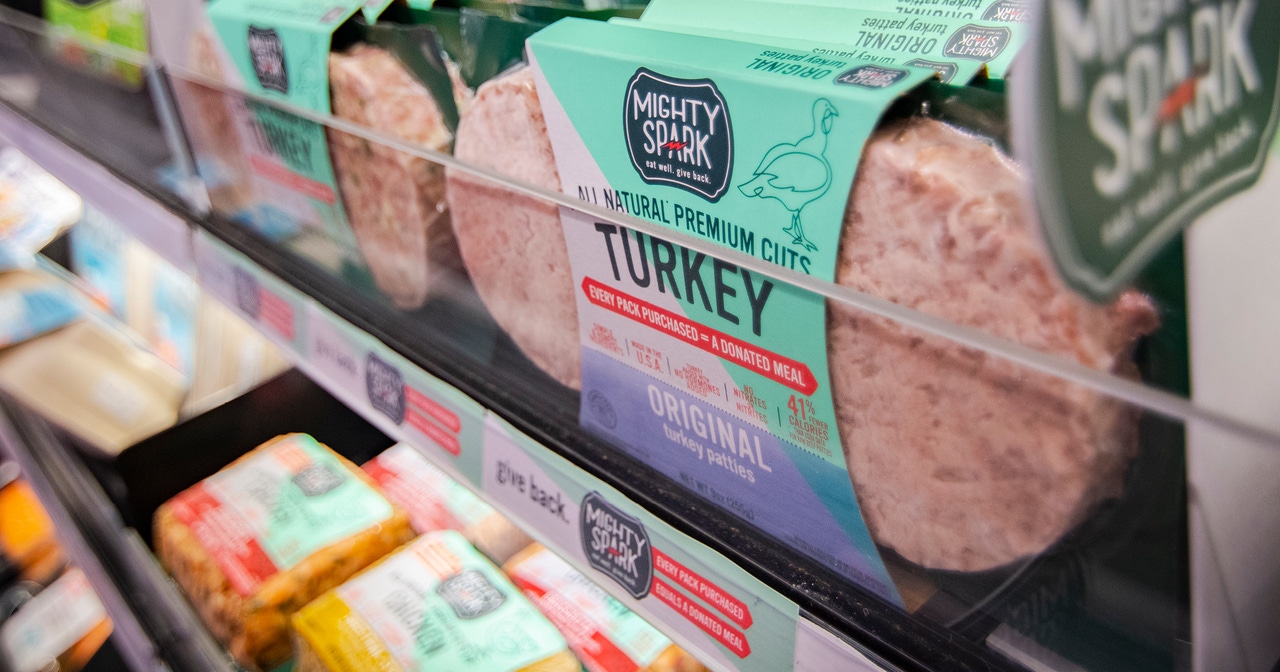How Cultural Shifts Are Changing Meat MerchandisingHow Cultural Shifts Are Changing Meat Merchandising
Retailers are enhancing their fresh meat cases with specialty cuts, value-added options and branded products. Grocery shoppers historically focus on cut and quality, but a growing preference for premium is starting to reshape retailers' merchandising efforts.

As the largest perimeter department and factoring among the most powerful categories across the store, a strong meat case is crucial to retailers’ bottom line. With $67 billion in annual meat sales, according to The Power of Meat 2019 report by the Food Marketing Institute and the North American Meat Institute’s Foundation for Meat and Poultry Research and Education, few categories come close to the role the category plays in a store’s image and financial success.
However, while the category’s engagement remains steady, with 86% of shoppers identifying themselves as meat eaters, a cultural shift is undoubtedly unfolding in terms of shoppers’ habits and preferences, particularly around branded meats, product attributes and preparation methods. By conveying a brand’s differentiation and production claims, offering premium and convenience-focused items and providing education and inspiration for preparation methods, retailers and suppliers have an opportunity to expand consumers’ consumption frequency and further drive meat sales at retail.
Brand Neutrality and a Preference for Premium
Despite the changes sweeping across the food culture landscape today, consumers’ brand preferences for fresh meat and poultry have remained strong in recent years. While 14 years ago the vast majority of shoppers were brand-neutral, including 74% for fresh meat and 63% for processed meat, today just 50% of shoppers are brand-neutral when purchasing fresh meat—maintaining last year’s low—and 39% of those purchasing processed meat are brand-neutral, according to the Power of Meat 2019.
What’s more, the report found that interest in branded items is much higher among younger shoppers, with just 36% of Gen Z shoppers identifying as brand-neutral, compared with 58% of baby boomers. Given that these younger shoppers are more likely to seek inspiration using social and digital sources, retailers must position themselves at their point of decision-making to translate inspiration into brand and retail dollars.

Photograph courtesy of Hy-Vee
“This growing interest in brands, whether manufacturer or private brands, is also directly related to the growing offering of strong, differentiated brands—often tied to production attributes such as grass-fed, antibiotic-free, local/USA raising, etc.,” says Anne-Marie Roerink, principal and founder of 210 Analytics, based in San Antonio. “For retailers, this move toward brands can be a new way to differentiate. It is key to create a curated offering of must-have big brands combined with specialty and store brands tailored to the store audience.”
Providing an assortment of manufacturer and private brand items will serve retailers as a point of differentiation, but education is also necessary to inform shoppers about what sets the products and brands apart. As the economy continues to improve, consumers are increasingly willing to spend more money on a higher-end, premium cut at the meat case. Over the past year, higher-end beef cuts saw significant growth, including ribeye roast (14.2%), T-bone steak (13.9%) and bone-in strip steak (9.5%), according to the Power of Meat 2019.
For continued growth of premium proteins at the meat case, retailers must not only communicate to the shopper the brand’s points of differentiation but also prove the value of those higher-cost premium products. Plus, with the availability of high-quality products in the marketplace greater than ever before, the vast variety might be overwhelming for the average consumer, says Ozlem Worpel, brand manager for Tyson Fresh Meats, based in Dakota Dunes, S.D.
Offering an appealing meat case that features signage from various brands to highlight their products is key. “The quality of beef you purchase for pot roast may vary from what quality of beef you desire for a grilled steak,” Worpel says. “It’s important to explain to consumers why premium products are more expensive and how premium quality meats provide the best eating experience available.”
Production Attributes Drive Growth
Greater assortment, better prices and increased transparency are among the top factors shoppers seek from the meat case, with one-third of shoppers indicating they would like improved information about when an item was prepared as well as the quality of the meat, according to the Power of Meat 2019.
Specialty brands and premium offerings with a focus on production attributes outgrew the total meat department and conventional offerings over the past year, including grass-fed (12.2%), organic (13.1%), hormone-free (5.2%) and all natural (6.4%). By working with suppliers, retailers can leverage a brand’s attributes and authentic stories to drive sales at the meat case, says Liz Moore, brand marketing specialist for Agri Beef, based in Boise, Idaho. The company offers premium products under its Snake River Farms and Double R Ranch brands, which not only offer USDA-grade quality but also tout a production process centering on sustainability, animal well-being and social responsibility.
“By aligning this way, retailers can also reflect their own values to their consumers,” Moore says. “The consumer wants authenticity and is seeking a connection with brands that reflect authenticity and transparency.”
With two-thirds of shoppers seeking “better-for-me” items, according to the Power of Meat 2019, and 7 out of every 10 shoppers believing humanely raised, free-range, grass-fed and hormone free benefits the livestock, retailers must curate an assortment of products and brands that align with consumers’ values.
“By focusing on assortment strategies that cater to the growing number of consumers seeking ‘better-for-me’ options, retailers need to consider increasing assortments of leaner cuts, blended and value-added meat items,” says Nick Beste, founder and CEO of Mighty Spark Food Co., Minneapolis, which offers all-natural chicken and turkey items made from premium cuts with simple, whole food ingredients, appealing to health-focused consumers. “Retailers can win with this consumer—specifically among women and millennials—by ensuring new items are merchandised where consumers are used to shopping for leaner proteins.”
Communicating the Value-Add
In addition to production attributes, consumers crave convenient and creative meal solutions—and are willing to splurge for these time-saving options. At $4.6 billion, growth of value-added meats exceeded total category performance in 2018, with sales up 5.1%, according to the Power of Meat 2019.
For instance, Niman Ranch, based in Northglenn, Colo., saw what the company called surprising growth in its Fearless Frank Hot Dogs, rising 18% over the past year. The company attributes its success to continuously launching value-added meats in new, interesting flavors while providing retailers with engaging sales materials that convey the brand’s story to today’s more discriminating meat eaters.
“We believe this growth is due to families looking for clean products to easily serve on the dinner table,” says Ashley DiBlasi, senior director of marketing at Niman Ranch. “We have fantastic specialty grocer partners who are proud to display photos of Niman Ranch farm families and take the extra time to educate customers on what makes our products so special.”
Similarly, Cargill Protein, based in Wayzata, Minn., is working with retailers to provide innovative product and technology solutions that satisfy wholesome and easy meal preparation for consumers. This includes value-added products such as marinated meals and meal starter kits as well as technology solutions that clearly communicate to the shopper how to prepare products via augmented reality and other on-pack applications.

Photograph courtesy of Cargill
“At Cargill, our consumer insights data shows that convenience products are continuing to experience strong growth numbers in the fresh meat category,” says Chuck Gitkin, CMO of Cargill’s North America protein business. “Value-added, fully cooked and deli products, as well as meal kits, all provide today’s consumers solutions that help them get dinner on the table.”
Also, as consumers become grow hungrier for time, the need for faster meal solutions will increase, Gitkin says. However, it’s important to deliver on not only convenience but also a competitive price, high-quality product and great flavor.
Price is the primary factor limiting more value-added meat and poultry purchases among both current users and those who shy away from the category. But as affirmed in the Power of Meat 2019, current core users seek a greater assortment and variety of flavor at more competitive prices, and one-third would also like better information about when the product was prepared as well as the quality of the meat. As such, retailers have an opportunity to offer better prices, more assortment and transparency to spur increased purchases at the meat case
About the Author
You May Also Like





.webp?width=300&auto=webp&quality=80&disable=upscale)
